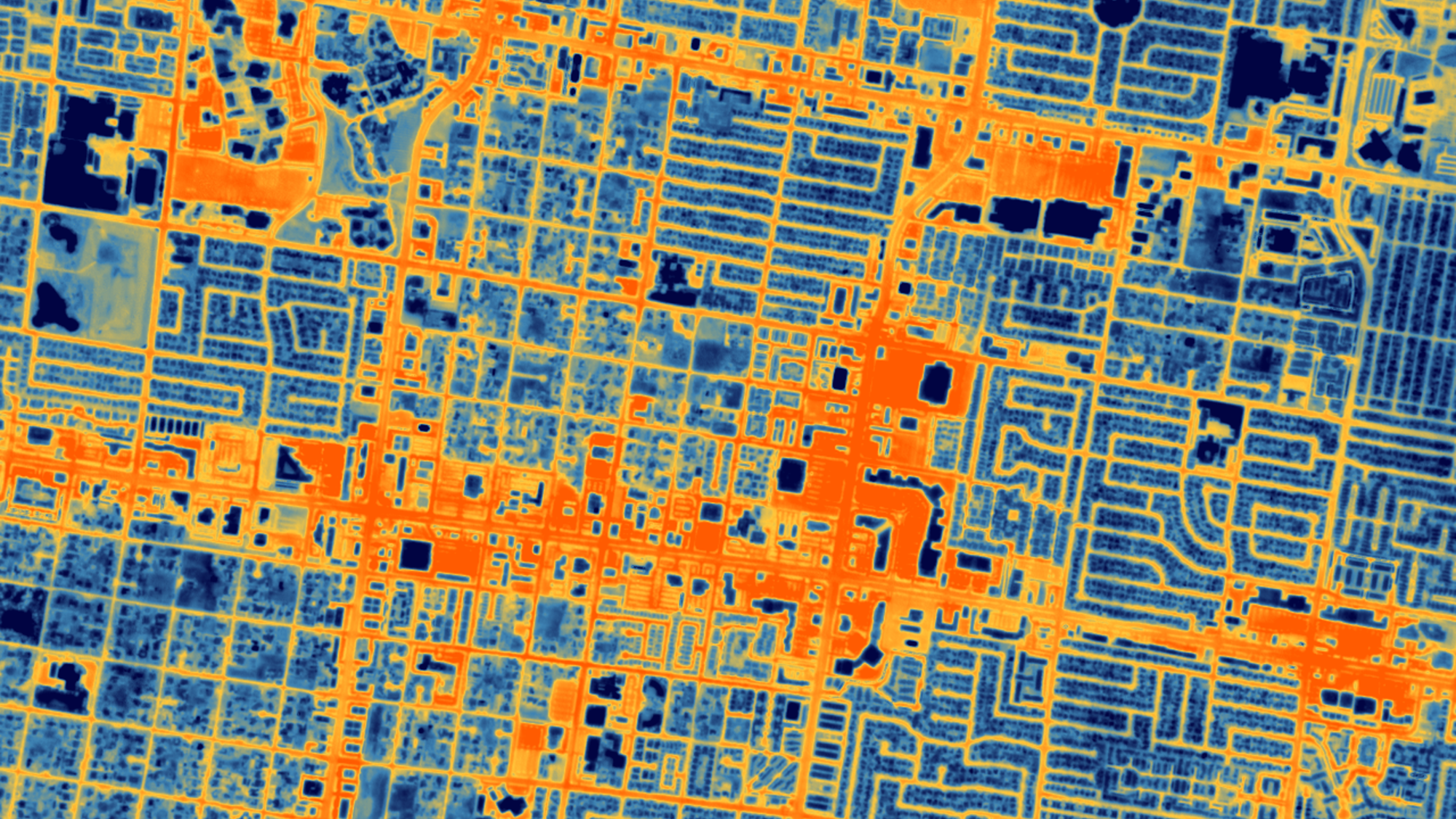World's best space-based thermometer dead 2 months after 1st image release
HOTSAT-1's images thrilled scientists, but now the craft's innovative camera is dead.

The world's most advanced space-based thermometer thrilled scientists when it first came online.
The HOTSAT-1 satellite's first images, released in early October, revealed in unprecedented detail how temperatures change on Earth's surface. The satellite's camera was so sensitive it could even track trains from space from their thermal signatures. But now, only six months after its launch from Vandenberg Space Force Base in California, the experimental spacecraft is out of order.
SatVu, HOTSAT-1's maker and operator, announced on Friday, Dec. 15, that the spacecraft suffered an "anomaly, which is expected to impact ongoing operations."
The emailed statement doesn't specify the nature of the anomaly, but the BBC stated in its report that the affected system is HOTSAT-1's precious thermal camera, which stopped working "earlier this week." According to the BBC, SatVu's engineers are still in contact with the spacecraft but don't expect to restore operations.
Related: New space-based thermometer takes Earth's temperature in unprecedented detail (photos)
The London-based SatVu said it is currently working with U.K. small satellite manufacturer Surrey Satellite Technology Ltd, which built HOTSAT-1, to assess the problem.
The company released the first images captured by the 3.3 by 3.3 by 3.3 feet (1 by 1 by 1 meter) spacecraft in early October, delivering on its promise to provide the most detailed look at the distribution of heat on Earth's surface. Capable of resolving details as small as 11 feet (3.5 m), HOTSAT-1's innovative camera allowed scientists to visualize the thermal effects of city parking lots on surrounding buildings or the cooling influence of harbors and maritime ports. The camera also provided insights into the behavior of wildfires and, in one particularly stunning sequence, captured the thermal footprint of a train travelling on a main rail line in Chicago.
Get the Space.com Newsletter
Breaking space news, the latest updates on rocket launches, skywatching events and more!
One of SatVu's main selling points is to map how heat escapes from buildings, and enable city planners to makes improvements that can lead to better energy efficiency and reduced carbon footprints.
Through a combination of a slow shutter and precise pointing technology, HOTSAT-1 was able to outdo all existing temperature monitoring satellites including those built by world's leading space agencies, such as NASA or the European Space Agency.
HOTSAT-1's premature demise, however, is not the end for SatVu. The satellite was insured, and the company plans to launch a replacement as early as 2025, according to the BBC.
"We have ample financial runway to propel us to the next satellite and beyond," Anthony Baker, SatVu CEO and co-founder, said in the statement. "Our learnings from this mission are unparalleled. We are armed with enough data to develop incredible products that will be integral to shaping our future commercial offering."
SatVu, which has secured a total of 30.5 million British pounds ($37.1 million) in venture capital funding so far, plans to ultimately operate a constellation of eight to 10 temperature-monitoring satellites, which would allow scientists, city planners and other parties to monitor in detail how temperatures on Earth change every day.
The company said that images provided by HOTSAT-1 since its launch "demonstrated the potential for this technology to act as a new 'data layer' to visualise the Earth's surface, augmenting our understanding of environmental and heat related phenomena."
"SatVu is unwavering in its commitment to capturing the highest resolution thermal data from space for a safer and more sustainable Earth and is already in advanced discussions around the launch of its second satellite - HOTSAT-2," the company added.
Join our Space Forums to keep talking space on the latest missions, night sky and more! And if you have a news tip, correction or comment, let us know at: community@space.com.

Tereza is a London-based science and technology journalist, aspiring fiction writer and amateur gymnast. Originally from Prague, the Czech Republic, she spent the first seven years of her career working as a reporter, script-writer and presenter for various TV programmes of the Czech Public Service Television. She later took a career break to pursue further education and added a Master's in Science from the International Space University, France, to her Bachelor's in Journalism and Master's in Cultural Anthropology from Prague's Charles University. She worked as a reporter at the Engineering and Technology magazine, freelanced for a range of publications including Live Science, Space.com, Professional Engineering, Via Satellite and Space News and served as a maternity cover science editor at the European Space Agency.
-
Unclear Engineer Stunningly useful data!Reply
Glad to read that the satellite was insured and can be quickly replaced.
Even better that it can be quickly replicated by 10x to get wide coverage with that kind of data. -
bp968 Reply
A fairly cheap 1x1 meter satellite that can resolve details down tona few feet? I can think of a customer who would pay 100x as much for those things and toss them up by the dozens and it's not a city planner. Very few nations could actively track dozens of objects that small so it would be impossible to know when a thermal camera was passing overhead (and with enough of them on the right orbits their would *always* be a thermal camera overhead).Admin said:The world's most accurate space-based thermometer has suffered a mission-critical anomaly only two months after the release of its first images.
World's best space-based thermometer dead 2 months after 1st image release : Read more
Modern peer nation war is going to involve terrible attrition for everyone. No one will be able to hide anywhere, at anytime.









